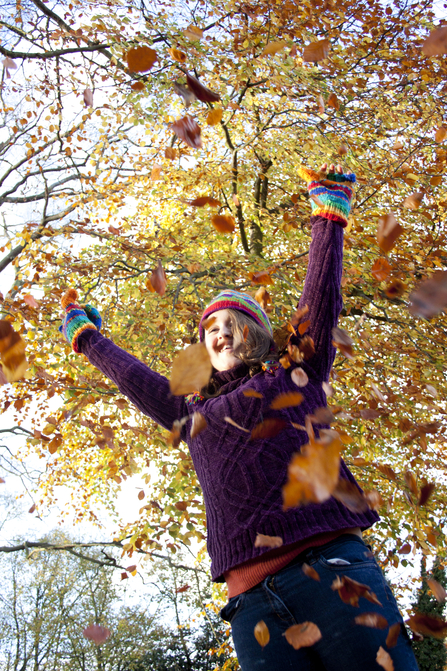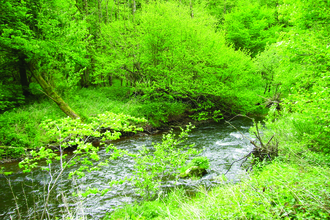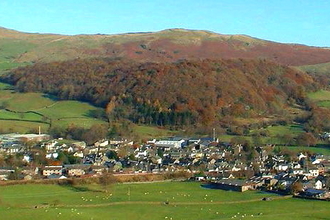Continued from Autumn colours Part 1 blog
Autumn colour - part 2
Oak leaf in Autumn © Ross Hoddinott/2020VISION
In North America and Asia – and sometimes in Europe – autumn and winter can bring long, dry, sunny periods in daytime along with cold nights.
In these situations, the leaves of a high proportion of species regularly turn red. What seems to be happening is that exposure to high autumn light levels (especially high UV levels) can damage sensitive leaf and other structures – and the manufacture of the red pigments in autumn is a protective defence mechanism to soak up the damaging energy.
In other words, the plants seem to be protecting their tissues to enable the recovery of their useful contents before the leaves fall.
In these situations, plants seem to specifically manufacture new pigments as a defence by absorbing some of the energy from the exposure to intense levels of light.
These are usually the so-called anthocyanins which cause the leaves to turn red or purple.
The higher the levels of sunshine in the lead up to and during the period of leaf senescence, the greater the amount of antioxidant the leaf will produce – and the more intense the autumn colours.
So the best and most intense autumnal leaf displays develop during prolonged periods of dry, sunny weather in September and October with cool (but not too cold) nights.
The need to protect sensitive structures from damage by intense levels of light is also why many plants will develop red leaves or other organs at times other than in autumn.
This may well be the case, for example, with the red tentacles of sundew plants – their very delicate, highly specialised and sensitive organs which catch and digest insects.
Out on the surface of bogs, these plants can be exposed to extremes of heat and high light intensity all year round and their red colouration may well be more about sunscreen protection than enticing insects to the trap.
It may well also be why many apples, grapes and other fruits turn red in the autumn sunshine when they’re ripe.
Again to protect the fruit until it has served its purpose, in this case to enlist the help of animals that help disperse their seeds. The red colour in these circumstances may also act as a visual cue to attract mammalian and avian dispersers to the fruit.
But there are other pressures operating and some plants, at some times, certainly use red colouration in their tissues to act as a warning to deter invertebrate herbivores from attacking and eating the plant.
So ‘how’ plant leaves change colour may be satisfactorily explained through their chemistry, but understanding exactly ‘why’ they change colour is much more complicated and difficult to prove.
In the meantime, let’s hope for a long dry and sunny autumn with cool nights so we can just enjoy the grand spectacle of a colourful autumn in Cumbria’s trees and woodlands.

© Tom Marshall



